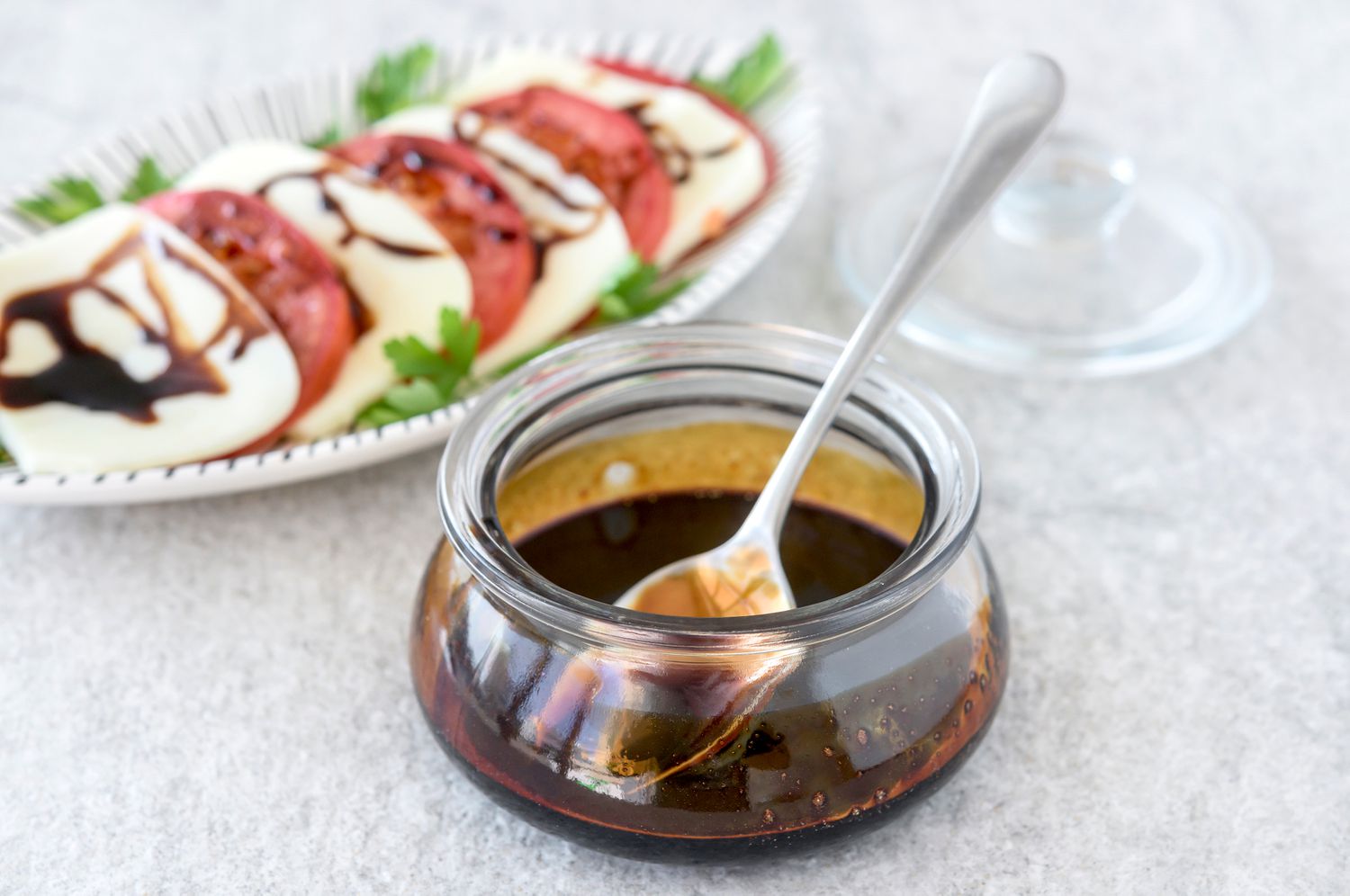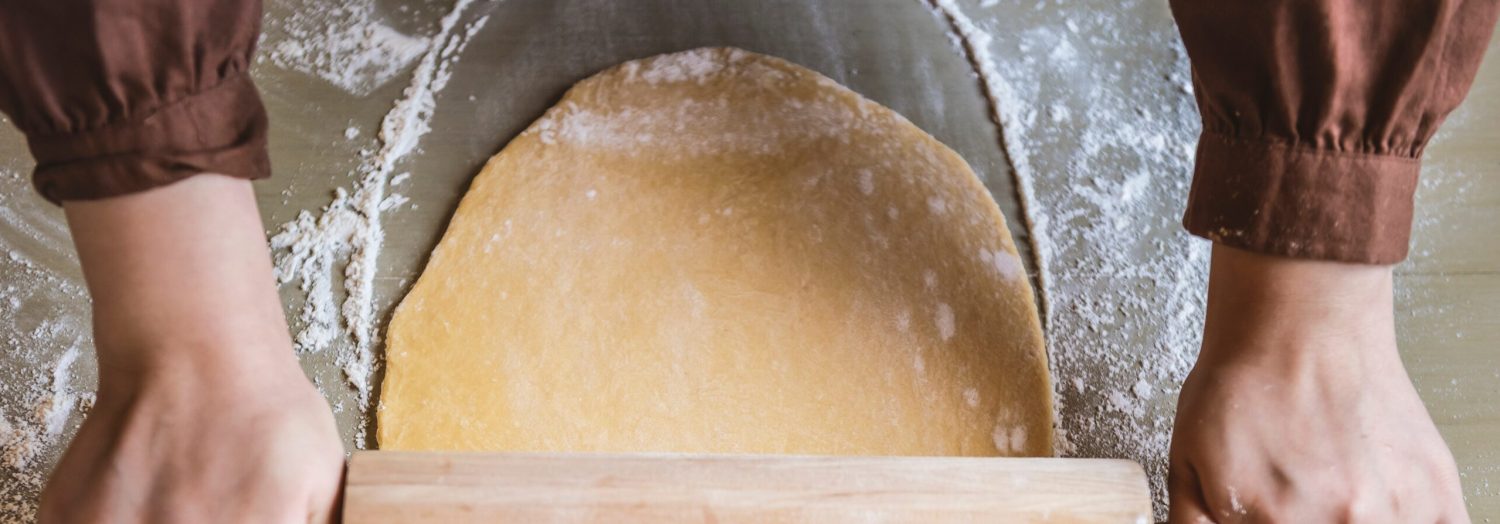A balsamic glaze is a versatile condiment that can elevate a variety of dishes, from salads to grilled meats. Its rich, tangy flavor combined with a hint of sweetness makes it a favorite in many kitchens. This simple recipe allows you to create a delicious balsamic glaze at home with just two ingredients.
The main ingredients for this recipe are balsamic vinegar and brown sugar. While brown sugar is commonly found in most households, balsamic vinegar might not be as ubiquitous. When shopping for balsamic vinegar, look for a high-quality option, as it will significantly impact the flavor of your glaze.

Ingredients for Balsamic Glaze Recipe
Balsamic vinegar: A dark, concentrated vinegar originating from Italy, known for its rich and complex flavor profile.
Brown sugar: A type of sugar that contains molasses, giving it a moist texture and a caramel-like flavor.
Technique Tip for This Recipe
When making a balsamic glaze, it's crucial to monitor the heat closely. If the vinegar and sugar mixture boils too vigorously, it can burn and become bitter. Aim for a gentle simmer to achieve a smooth, rich syrup. Additionally, use a non-reactive saucepan, such as stainless steel, to prevent any metallic taste from affecting the glaze.
Suggested Side Dishes
Alternative Ingredients
balsamic vinegar - Substitute with red wine vinegar: Red wine vinegar has a similar acidity and can be sweetened to mimic the flavor of balsamic vinegar.
balsamic vinegar - Substitute with apple cider vinegar: Apple cider vinegar has a fruity undertone that can complement the sweetness when reduced.
brown sugar - Substitute with honey: Honey provides a natural sweetness and a slightly different but pleasant flavor profile.
brown sugar - Substitute with maple syrup: Maple syrup adds a rich, complex sweetness that pairs well with the tanginess of vinegar.
Alternative Recipes Similar to This
How to Store or Freeze This Recipe
Allow the balsamic glaze to cool completely before storing. This ensures it reaches its final thickened consistency and prevents condensation from forming in the storage container.
Transfer the glaze into an airtight container, such as a glass jar or a plastic squeeze bottle. This will help maintain its rich flavor and prevent it from absorbing any unwanted odors from the fridge.
Store the container in the refrigerator. The glaze can last up to a month when properly refrigerated, making it a versatile addition to your culinary arsenal.
If you plan to freeze the glaze, pour it into a freezer-safe container, leaving some space at the top to allow for expansion. This prevents the container from cracking or breaking.
Label the container with the date of preparation. This helps you keep track of its freshness and ensures you use it within a reasonable time frame.
When ready to use the frozen glaze, thaw it in the refrigerator overnight. This gradual thawing process helps maintain its texture and flavor.
If the glaze appears too thick after thawing, gently warm it in a saucepan over low heat, stirring occasionally. This will help restore its smooth, syrupy consistency.
For an extra touch of flavor, consider adding a pinch of sea salt or a splash of vanilla extract before storing. These subtle enhancements can elevate the taste of your glaze, making it even more delightful when drizzled over grilled vegetables, roasted meats, or fresh fruits.
Always use a clean spoon or utensil when scooping out the glaze to avoid contamination. This simple practice helps maintain its quality and extends its shelf life.
Experiment with different storage containers, such as small mason jars or decorative bottles, to add a touch of elegance when gifting your homemade balsamic glaze to friends and family.
How to Reheat Leftovers
Stovetop Method:
- Pour the balsamic glaze into a small saucepan.
- Heat over low heat, stirring occasionally to prevent sticking or burning.
- Warm until it reaches your desired temperature, ensuring it doesn't boil.
Microwave Method:
- Transfer the balsamic glaze to a microwave-safe container.
- Cover loosely with a microwave-safe lid or plastic wrap, leaving a small vent.
- Heat on medium power in 15-second intervals, stirring in between, until warmed through.
Double Boiler Method:
- Fill a medium saucepan with a few inches of water and bring to a simmer.
- Place the balsamic glaze in a heatproof bowl and set it over the simmering water.
- Stir occasionally until the glaze is warm and smooth.
Oven Method:
- Preheat your oven to 200°F (93°C).
- Pour the balsamic glaze into an oven-safe dish.
- Cover with foil to prevent drying out.
- Heat for about 10-15 minutes, stirring halfway through, until it reaches the desired temperature.
Best Tools for Making This Recipe
Small saucepan: A small saucepan is essential for combining and heating the balsamic vinegar and brown sugar. It allows for even heat distribution and controlled simmering.
Wooden spoon: A wooden spoon is perfect for stirring the mixture constantly to ensure the sugar dissolves properly and to prevent sticking or burning.
Measuring cups: Measuring cups are necessary to accurately measure the balsamic vinegar and brown sugar, ensuring the correct proportions for the glaze.
Stove: A stove is needed to provide the heat source for cooking the glaze. It allows you to control the temperature from medium heat to a gentle boil and then to a low simmer.
Heat-resistant spatula: A heat-resistant spatula can be used to scrape down the sides of the saucepan and ensure all ingredients are well incorporated.
Timer: A timer helps keep track of the simmering time, ensuring the mixture reduces by half and achieves the desired syrupy consistency.
Cooling rack: A cooling rack is useful for placing the saucepan on after removing it from the heat, allowing the glaze to cool and thicken properly.
Storage container: A storage container is needed to store the balsamic glaze once it has cooled, keeping it fresh for future use.
How to Save Time on Making This Recipe
Use a larger pan: A wider surface area will help the balsamic vinegar reduce faster.
Pre-measure ingredients: Have your balsamic vinegar and brown sugar ready to go before you start cooking.
Higher initial heat: Start with medium-high heat to bring the mixture to a boil quicker, then reduce to simmer.
Stir intermittently: Stir occasionally instead of constantly to save effort while ensuring the sugar dissolves.
Cool rapidly: Pour the glaze into a shallow dish to cool faster and thicken more quickly.
Balsamic Glaze Recipe
Ingredients
Main Ingredients
- 1 cup Balsamic Vinegar
- ¼ cup Brown Sugar
Instructions
- Combine balsamic vinegar and brown sugar in a small saucepan over medium heat.
- Stir constantly until the sugar has dissolved.
- Bring to a gentle boil, then reduce the heat to low and simmer.
- Simmer until the mixture has reduced by half and has a syrupy consistency, about 15 minutes.
- Remove from heat and let cool. The glaze will thicken as it cools.
Nutritional Value
Keywords
More Amazing Recipes to Try 🙂
- Air Fryer Meatballs Recipe25 Minutes
- Loaded Baked Potato Salad Recipe35 Minutes
- Crumpets Recipe35 Minutes
- Grilled Cheese and Peanut Butter Sandwich Recipe10 Minutes
- Italian Spaghetti Sauce with Meatballs Recipe1 Hours
- Strawberry Salad Recipe10 Minutes
- Microwave Baked Potato Recipe15 Minutes
- Mango Banana Smoothie Recipe10 Minutes

Leave a Reply